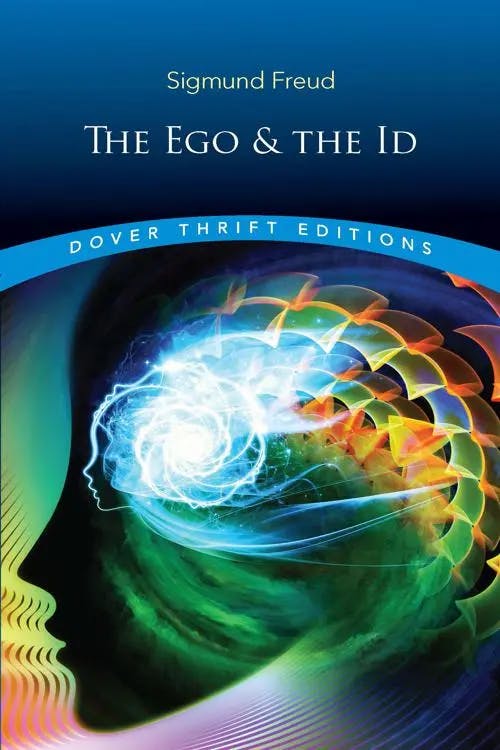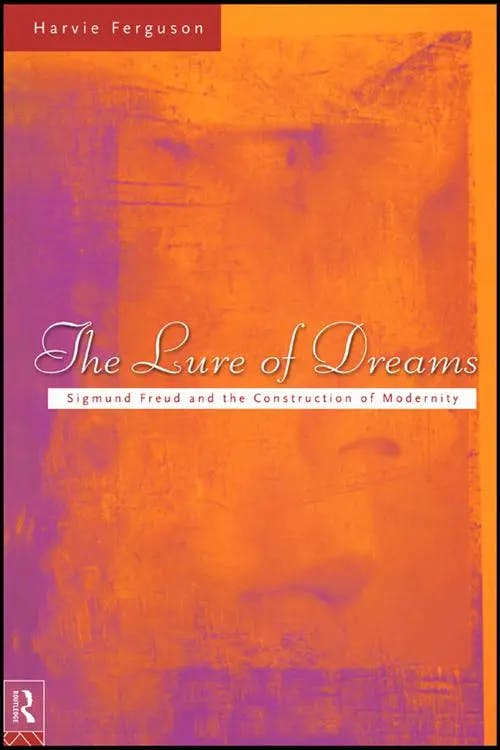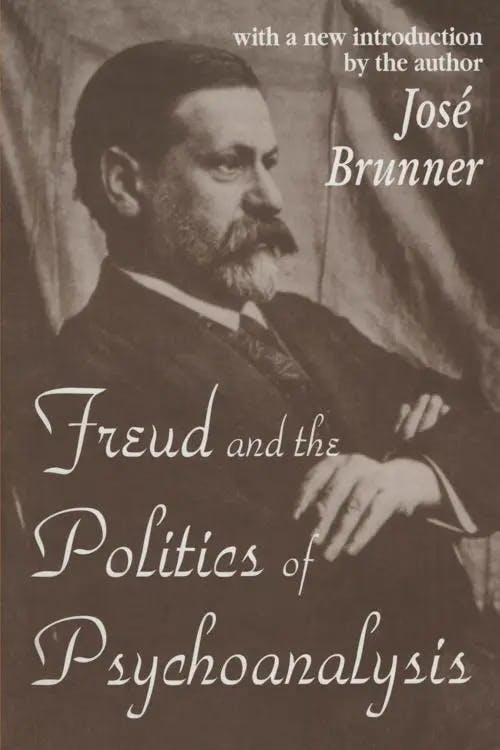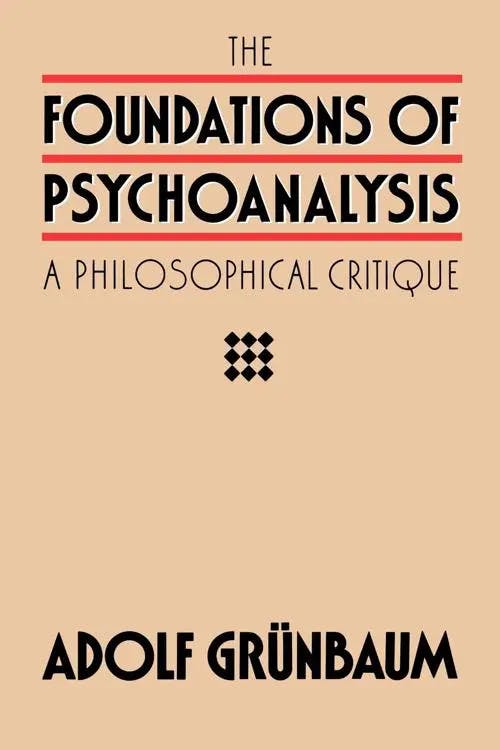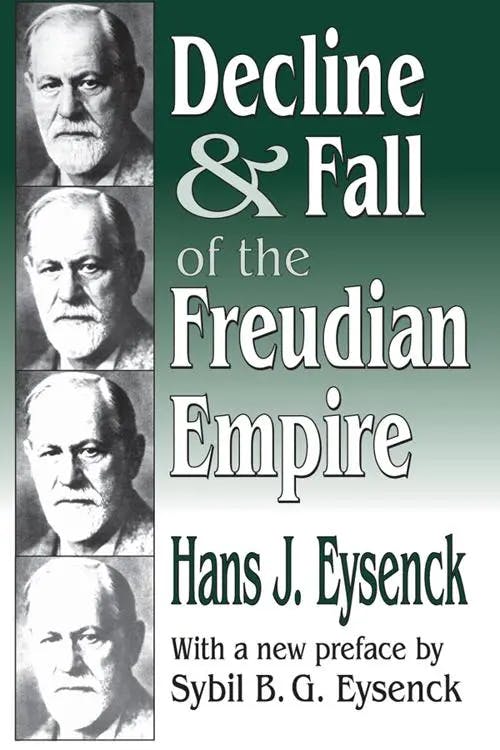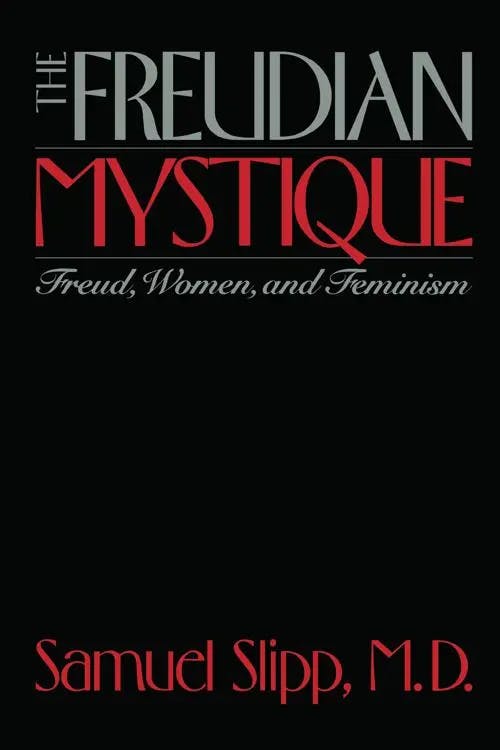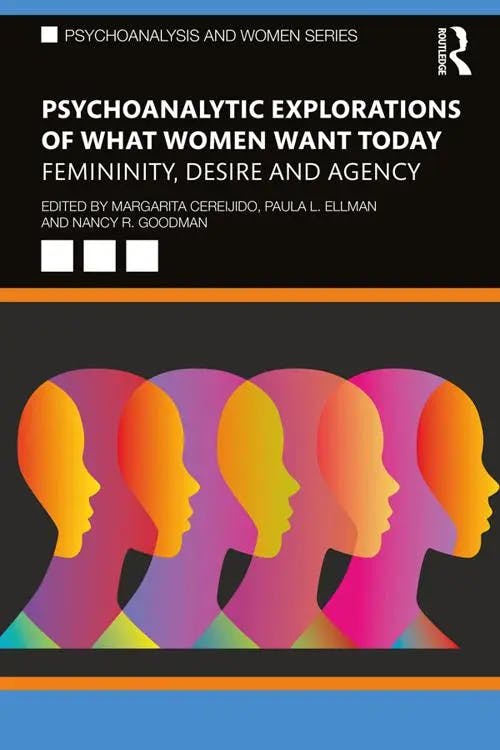What is Freud's Psychoanalytic Theory?
PhD, English Literature (Lancaster University)
Date Published: 16.03.2023,
Last Updated: 01.07.2024
Share this article
Defining Psychoanalytic Theory
Psychoanalytic theory, developed by physician Sigmund Freud in the 1890s, understands personality and psychopathology within a developmental framework. Freud theorised that human behaviour was influenced by repressed memories, thoughts, and desires. This theory informed Freud’s therapeutic approach, which sought to treat mental illness by bringing unconscious thoughts to the forefront of the patient’s mind. Though the scientific merit of psychoanalysis has been contested, Freud’s development of talking therapy is still widely used today.
The first use of the term “psychoanalysis” was in Freud’s essay ‘Heredity and Aetiology of Neuroses’ (1896). In this essay, Freud cites the influence of physician Josef Breur’s “exploratory procedure” has resulted in his own “new method of psychoanalysis”. Freud describes his own theory as,
A little intricate, but irreplaceable, so fertile has it shown itself to be in throwing light upon the obscure unconscious mental processes. (1896)
Breur was both a collaborator and mentor to Freud and together they wrote Studies in Hysteria (1893 [1936]). This publication focuses on a patient known as “Anna O” who was suffering from “hysteria”; both physicians agreed that the cause of this mental disorder was to be found in the mind and could be retrieved (and thereby resolved) through talking therapy.
Despite Freud’s skepticism regarding some of Breur’s methods, his belief in the talking cure would form the basis of his psychoanalytic theory. As Freud explains in A General Introduction to Psychoanalysis (1915–1917, [2020]),
The patient talks, tells of his past experiences and present impressions, complains, confesses his wishes and emotions. The physician listens, tries to direct the thought processes of the patient, reminds him of things, forces his attention into certain channels, gives him explanations and observes the reactions of understanding or denial which he calls forth in the patient.
Sigmund Freud
The patient talks, tells of his past experiences and present impressions, complains, confesses his wishes and emotions. The physician listens, tries to direct the thought processes of the patient, reminds him of things, forces his attention into certain channels, gives him explanations and observes the reactions of understanding or denial which he calls forth in the patient.
In these sessions, Freud aimed to reveal what traumas, desires and urges were lurking, unaddressed, in the patient’s unconscious mind.
The conscious and unconscious mind
Freud, fascinated by archaeology, believed that the mind was structured by layers and by permeating each layer, psychoanalysis could find the root cause of the patient’s psychological problem. As Freud writes in Studies in Hysteria,
[The psychoanalytic] procedure was one of clearing away the pathogenic psychical material layer by layer, and we liked to compare it with the technique of excavating a buried city. (1893, [2004])
This archaeological metaphor is replicated in Freud’s topological representation of the mind. Psychoanalytic theory is based upon the belief that our mind is divided into three parts (the conscious, preconscious and unconscious), each part on a deeper and less accessible level than the previous one.
These layers of consciousness have often been represented through the imagery of an iceberg. Firstly, at the very tip of the iceberg, we have consciousness. Our conscious mind is how we perceive reality; it is the thoughts we are aware of. For example, in the conscious mind, you can recall key information about yourself, certain memories and also current thoughts and feelings.
Within The Ego and The Id Freud suggested that we have two levels to our unconscious mind, writing that,
We obtain our concept of the unconscious, therefore, from the theory of repression. We see, however that we have two kinds of unconscious — that which is latent but capable of becoming conscious, and that which is repressed and not capable of becoming conscious in the ordinary way. (1923, [2018])
Sigmund Freud
We obtain our concept of the unconscious, therefore, from the theory of repression. We see, however that we have two kinds of unconscious — that which is latent but capable of becoming conscious, and that which is repressed and not capable of becoming conscious in the ordinary way. (1923, [2018])
The preconscious level is that which is “capable of becoming conscious”; for example, this is information which is not repressed and is available, but is not retrieved as quickly as information in the conscious. The preconscious will store information we don’t often refer to. At the final level, resembling the bottom 90% of the iceberg is the unconscious. The unconscious contains fully submerged thoughts that have been repressed and are “not capable of becoming conscious in ‘the ordinary way”. Our conscious mind works to keep control of the unconscious. Freud believed this occurred as painful thoughts and memories can be hidden by the unconscious as a way to protect the conscious mind.
Psychosexual stages of development
In 1905, Freud wrote Three Essays on the Theory of Sexuality (1905, [2020]) in which he analyses how sexuality is present in early developmental stages, and how this impacts adulthood. These are known as the psychosexual stages as each phase represents a fixation of the libido. Freud depicted several stages of a person’s personality forming through a series of psycho-sexual developments in childhood, meaning in each stage a child develops aspects of the sexual pleasure that will manifest later in their life. If a child becomes “fixated” on any particular stage, it will become a defining personality trait.
These are as follows:
- The oral stage (ages 0-1)
- Anal stage (ages 1–3)
- The phallic stage (ages 3–5)
- Latency period (6 years–puberty)
- Genital stage (puberty–adulthood)
The “oral stage” entails the fixation on the mouth such as breastfeeding or sucking the thumb. Freud argued that children who retain this “are habitual kissers as adults and show a tendency to perverse kissing, or as men they have a marked desire for drinking and smoking” (1905 [2020]). Conversely, if this stage is repressed, the person will “experience disgust for eating and evince hysterical vomiting” (1905, [2020]).
The “anal stage” is the period of learning control over the bowels and bladder. This stage and the experience of withholding and releasing stools become a source of pleasure. The expulsion of the bowels, Freud writes, constitutes the child’s first “donation” (1905, [2020]). Freud goes on to state that “the disposal of which expresses the pliability while the retention of it can express the spite of the little being towards its environment” (1905, [2020]). Children who are “anally expulsive”, and carry this into adulthood, tend to give things away, be messy and disorganised and overshare personal information. On the other hand, repression in this stage will result in the development of an “anal-retentive” personality, characterised by being withholding and secretive.
The “phallic stage” is the stage of recognising sexual differences, where sensual experience is focused on the genital areas through activities of washing or urinating. The most important aspect of this stage is the Oedipus complex. Freud theorises that the male child will develop an unconscious sexual attraction to the opposite-sex parent and, as a result, feel a sense of envy and rivalry towards the same-sex parent. However, the child worries the father will realise this and punish him through castration, known as “castration anxiety”. Freud argued girls go through a different phase (the Electra complex) and develop an attraction to their fathers. This originates from resentment towards the mother who they feel has “castrated” them, resulting in “penis envy”.
In the fourth stage, “the latency period”, the libido is dormant and there are no further psychosexual developments. All sexual urges are repressed at this stage.
The final stage, “the genital stage” defines the exploration of sexual relationships and effectively produces an outcome of the previous stages.
Id, ego & superego
In The Ego and the Id, Freud revised his theory of forces of the psyche with his structural model. This new structural model contained the id, the ego and the superego:
- The id — the primitive and instinctual part of the mind
- The ego — mediates the desires of both the id and the superego. It is worth looking at each of these components in further depth.
- The super-ego — develops through social norms and our interactions with the world and acts as a moral compass
The id is our instinctual and primitive life. The id is dominated by what Freud refers to as the “pleasure principle” in his work Beyond the Pleasure Principle (1920 [2014]). The pleasure principle is what guides us towards instant gratification. As we develop, the “reality principle” emerges, allowing us to delay gratification and control these impulses. The id, guided by the pleasure principle, contains our sexual and aggressive drives. Our id, in some capacity, exists before we do. We are born with urges, in-built desires and traits which define our behaviour.
The ego is our outward appearance of personality, and very simply the way we see and understand reality. It is tied to our instincts and acts as the basis of our conscious mind. It develops itself through our contact with reality. The ego is the negotiator between the three drives. In psychoanalytic theory, our ego strives to protect us from unbearable and traumatic thoughts. This is defined by what Freud called “the reality principle” where the ego seeks stability. Freud saw the ego as having the most demands placed upon it, stating that,
The poor ego has a still harder time of it; it has to serve three harsh masters, and it has to do its best to reconcile the claims and demands of all three...The three tyrants are the external world, the superego, and the id. (Freud, The Anatomy of a Mental Personality, 1933)
The superego, as Freud explains, is the last of the three components of the mind to develop. The role of the superego is to suppress the desires of the id, which are socially and morally unacceptable. The superego is created through our environment, parental relations and understanding of social norms and laws. This part of our mind is divided into two further parts: the ego ideal (the rules and standards for good behaviour) and the conscious. In Breakfast with Socrates: An Extraordinary (Philosophical) Journey Through Your Ordinary Day (2010), Robert Roland Smith uses the metaphor of getting dressed to demonstrate the superego,
Getting ready is that point in the day when the rivalry between the two needs is likely to peak, because we are making the transition from being at home and pleasing ourselves (ego) to going out and having to conform to a series of norms and conventions (superego). We become less ego and more superego with each button we fasten.
Robert Rowland Smith
Getting ready is that point in the day when the rivalry between the two needs is likely to peak, because we are making the transition from being at home and pleasing ourselves (ego) to going out and having to conform to a series of norms and conventions (superego). We become less ego and more superego with each button we fasten.
The importance of these entities is in how they interact with one another. In The Ego and the Id, Freud writes:
The ego is not sharply separated from the id; its lower portion merges into it…The repressed merges into the id, as well, and is simply a part of it. The repressed is only cut off sharply from the ego by the resistances of repression; it can communicate with the ego through the id. (2018, [1923])
They can be defined so far that they put pressure on one another and, in some cases, negotiate with each other. The ego is in a constant battle to suppress the desires of the id and the superego is always trying to dominate the ego and the id.
The road to the unconscious: the importance of dreams in psychoanalysis
Even today, over 100 years on, we can see the influence of Freud’s The Interpretation of Dreams (1899, [2015]). As Harvie Ferguson writes in The Lure of Dreams (2005),
The centrality of Freud’s writings to contemporary understanding of dreams can hardly be overestimated. In spite of sporadic efforts to reinstate a nineteenth-century scientific disdain of dreams, Freud’s influence is now so pervasive as to be almost invisible.
Harvie Ferguson
The centrality of Freud’s writings to contemporary understanding of dreams can hardly be overestimated. In spite of sporadic efforts to reinstate a nineteenth-century scientific disdain of dreams, Freud’s influence is now so pervasive as to be almost invisible.
For Freud, dreams aren’t random conjurations of the mind, but represent our repressed desires. In The Interpretation of Dreams, Freud summarises the significance of dreams by stating that they are the “royal road to the unconscious” (1900). This is one of the reasons dreams are interpreted as a depiction of fears, desires and fulfilments. Freud also believed some dreams would represent a disguised fulfilment of a wish whilst others might contain a repressed fear unknown to the patient. Freud suggests that the therapist must understand the dream to be able to get to the root cause of “phobias, obsessions, [and] delusions” (1899, [2015), and thus be able to treat these ailments.
Dreams, according to Freud, are made up of two types of content: manifest and latent. The manifest is the literal content found within a dream, whereas latent content describes what the dream symbolises. The goal of dream interpretation is to discover the latent content of the dream, and therefore the true urges and desires of the dreamer/patient. There are four ways the dreamwork, “the creative force that weaves the dream”, disguises the latent content of the dream:
- Condensation
- Displacement
- Secondary revision
- Symbolism
(1899, [2015]).
Condensation describes the combining of multiple elements of a dream; this can refer to combining people in the dream or words and symbols. The second mechanism, displacement, occurs when trivial information in dreams is seen as highly significant and, conversely, important content is ignored by the dreamer. The third method, secondary revision, is a process occurring at the end of the dream which forms the dream into a relatively coherent narrative. Freud suggests that this allows the conscious mind to attempt to make sense of the dream, enabling us to justify inconsistencies and gaps within the dream.
The final element of the dream, symbolism, allows us to transform our thoughts into images and sounds. According to Freud, the role of the psychoanalyst is to find the true meaning behind the dream by deciphering these symbols. He writes that “the task of dream formation is above all to overcome the inhibition from the censorship”(1899, [2015). Freud interpreted the dreams of his patients through what he called free association.In this technique, patients are invited to freely share thoughts or feelings that come to their minds, regardless of if they are coherent or logical. In A General Introduction to Psychoanalysis, Freud stated,
If I invite a person to tell me what occurs to him in relation to some certain element of his dream I am asking him to abandon himself to free association. (1915–1917, [2020])
Sigmund Freud
If I invite a person to tell me what occurs to him in relation to some certain element of his dream I am asking him to abandon himself to free association. (1915–1917, [2020])
Through this practice of free association, Freud realised that most dreams are repressed desires that have their roots in childhood.
Though many still believe in the significance of dreams, Freud’s theories on interpreting dreams have been largely debunked. In the 1950s, it was discovered that rapid-eye-movement (REM) sleep had a strong correlation with dreaming, discrediting Freud’s theory of dreams as expressions of unconscious wishes.
Criticisms of Freud
One of the main critiques of Freud centres around the Tally Argument. Freud admitted that the patient may be susceptible to suggestions by the therapist, known as transference. Freud wrote that,
After all, [the patient's] conflicts will only be successfully solved and his resistances overcome if the anticipatory ideas he is given [by the analyst] tally with what is real in him. Whatever in the doctor's conjectures is inaccurate drops out in the course of the analysis. (Freud, 1917, quoted in Brunner, 2018)
Jose Brunner
After all, [the patient's] conflicts will only be successfully solved and his resistances overcome if the anticipatory ideas he is given [by the analyst] tally with what is real in him. Whatever in the doctor's conjectures is inaccurate drops out in the course of the analysis. (Freud, 1917, quoted in Brunner, 2018)
Critic Adolf Grünbaum referred to this explanation as the “Tally Argument”. Grünbaum’s The Foundations of Psychoanalysis: A Philosophical critique (1985) is hailed as one of the most important critiques of Freud. Grünbaum claims that Freud’s Tally Argument is entirely contingent on the idea that only psychoanalytic techniques can cure psychological ailments. Grünbaum writes that,
[N]o empirically plausible alternative to that crucial discredited premise capable of yielding Freud's desired conclusions seems to be in sight. (1985)
Adolf Grunbaum
[N]o empirically plausible alternative to that crucial discredited premise capable of yielding Freud's desired conclusions seems to be in sight. (1985)
Even when the psychoanalyst may aim to be unbiased and scientific, overreliance on the patient’s articulation of their emotions, thoughts and memories may lead to erroneous conclusions. Grünbaum refers to Hans Eysenck’s comment that,
We can no more test Freudian hypotheses ‘on the couch’ than we can adjudicate between the rival hypotheses of Newton and Einstein by going to sleep under an apple tree. (Eysenck, 1963 quoted in Grünbaum, The Foundations of Psychology, 1985)
Many have also found that the interpretation of the patient’s dreams in particular depends entirely upon the psychoanalyst. This has resulted in criticisms that the psychoanalyst may struggle to remain objective.
As Eysenck writes in Decline and Fall of the Freudian Empire (2018),
Freud, it should be noted, never got his patients to recall their dreams immediately upon waking; neither did he himself follow this sage advice. Hence in Freud’s writings we never deal with dreams as such, but rather with constructs elaborated by memory from whatever the dream-content may have been, and changed from the true dream beyond recognition.
Hans Eysenck
Freud, it should be noted, never got his patients to recall their dreams immediately upon waking; neither did he himself follow this sage advice. Hence in Freud’s writings we never deal with dreams as such, but rather with constructs elaborated by memory from whatever the dream-content may have been, and changed from the true dream beyond recognition.
Eysenck further highlights how peculiarly Freud chose examples of dream interpretation which disproved his own theory.
Further criticisms of Freud relate to his work on sexuality, specifically the patriarchal way in which female sexuality was represented. Samuel Slipp summarises this criticism in The Freudian Mystique (1993),
Freud’s theory about women has been criticized by the feminist movement as being patriarchal, phallocentric, ignoring the mother, and too biologically oriented.
Samuel Slipp
Freud’s theory about women has been criticized by the feminist movement as being patriarchal, phallocentric, ignoring the mother, and too biologically oriented.
Feminist critic Betty Friedan in The Feminine Mystique (1963) stated that,
Freudian thought helped create a new super-ego that paralyses educated modern American women, a new tyranny of the ‘shoulds’, which chains women to an old image, prohibits choice and growth, and denies them individual identity.
(For more information on The Feminine Mystique and second-wave feminism, read our study guide Waves of Feminism).
The phallocentric nature of Freud’s work, however, has not dissuaded feminists from discounting psychoanalysis as a whole. Instead, many feminist scholars have sought to redefine gender notions within the framework of psychoanalytic theory. One of Freud’s most contentious assertions, that women feel resentment over being castrated and experience “penis envy”, is now seen by some critics as a reflection of a desire for the power that comes with being male. Margarita Cereijido, in Psychoanalytic Explorations of What Women Want Today: Femininity, Desire and Agency (2022), replaces Freud’s term “penis envy” with “power envy”. Cereijido further writes that,
The new psychoanalytic theories conceive of the feminine – and gender notions in general – as something that transforms itself. Gender ideals change within the cultural context, and each woman has her singular notion of the feminine.
Margarita Cereijido, Paula L Ellman, Nancy R. Goodman
The new psychoanalytic theories conceive of the feminine – and gender notions in general – as something that transforms itself. Gender ideals change within the cultural context, and each woman has her singular notion of the feminine.
Cereijido suggests that there is a place for feminism within psychoanalytic theory today, revealing that Freud’s phallocentric notions are likely a product of the time and place in which he was writing. Continued engagement by feminists with psychoanalysis has proven Freud’s theories on sexuality are worthy of reconsideration. For further information on the developments in this field, see Teresa Brennan’s Between Feminism and Psychoanalysis (2002) and Judith Glassgold and Suzanne Iasenza’s collection Lesbians, Feminism, and Psychoanalysis: The Second Wave (2014).
Psychoanalysis today
In spite of these criticisms, Freud has continued to be influential in the early 21st century. As Joan Riviere writes in Developments in Psychoanalysis (2018),
Nothing that [Freud] wrote is obsolete. There is nothing that he wrote that does not repay intensive study, comparison and reflection. Yet his assumption that his work would grow and develop—and in ways that he himself did not consciously foresee—has been confirmed.
Paula Heimann, Susan Isaacs, Melanie Klein, Joan Riviere
Nothing that [Freud] wrote is obsolete. There is nothing that he wrote that does not repay intensive study, comparison and reflection. Yet his assumption that his work would grow and develop—and in ways that he himself did not consciously foresee—has been confirmed.
Beyond the psychiatric community, Freud’s theories have influenced our understanding of art and culture. In Psychoanalysis and Cinema: The Play of Shadows (2019), Vicky Lebeau examines the developments in art, science and technology in the nineteenth century that have contributed to the creation of psychoanalytic film theory. Lebeau writes of how the “seductions of psychoanalysis and cinema” converge through their analysis of “ dream and desire, image and illusion, memory and shock” (2019). This reading is made possible through the application of psychoanalytic theory beyond science due to Freud’s interests in “literature, myth and the history of the occult” (Lebeau, 2019).
Reading film through a psychoanalytic lens has been readily applied to horror, specifically Julia Kristeva’s work on abjection theory. Kristeva’s work has influenced work such as Barbara Creed’s The Monstrous Feminine: Film, Feminism, Psychoanalysis (2015) which reappraised Freud’s theory of development, specifically his arguments around the Oedipus complex and castration crisis.
Despite the shortcomings of Freud’s scientific method of treatment and issues with validity, it is undeniable that his contributions have been manifold. As Slipp writes,
Freud sensitized society to a greater acceptance of human sexuality and aggression, as well as an acknowledgment of the influence of unconscious determinants on personality formation and relationships. Literature and art, as well as the behavioral and social sciences, have been profoundly enriched by the contributions of psychoanalysis. (The Freudian Mystique, 1993)
Though heavily criticized, Freud’s work permeates western society. Even outside of mental illness and treatment, Freud continues to be impactful in our everyday lives. For example, the Freudian slip (a slip of the tongue revealing hidden desires) is still used colloquially. His psychoanalytic method and free association technique continue in the modern (though much adapted) form of talking therapy. We generally accept today that talking through problems can alleviate anxiety and depression. Freud’s contention that unpleasant memories are repressed in the unconscious is likewise still influential with studies still being conducted on the connection between dissociative amnesia and trauma. Freud’s work has been groundbreaking and shaped our understanding of the complex nature of the human psyche.
For more on psychology, explore our bank of learning resources on psychology.
Bibliography
Brennan, T. (2022) Between Feminism and Psychoanalysis. Routledge. Available at: https://www.perlego.com/book/1621815/between-feminism-and-psychoanalysis-pdf
Brunner, J. (2018) Freud and the Politics of Psychoanalysis. Routledge. Available at: https://www.perlego.com/book/1563104/freud-and-the-politics-of-psychoanalysis-pdf
Cereijido, M. (2022) Psychoanalytic Explorations of What Women Want Today: Femininity, Desire and Agency. Routledge. Available at: https://www.perlego.com/book/3454388/psychoanalytic-explorations-of-what-women-want-today-femininity-desire-and-agency-pdf
Creed, B. (2015) The Monstrous-Feminine: Film, Feminism, Psychoanalysis. Routledge. Available at: https://www.perlego.com/book/1516433/the-monstrousfeminine-film-feminism-psychoanalysis-pdf
Eysenck, H. (1985/2018) Decline and Fall of the Freudian Empire. Routledge. Available at: https://www.perlego.com/book/1615827/decline-and-fall-of-the-freudian-empire-pdf
Ferguson, H. (2005) The Lure of Dreams. Routledge. Available at: https://www.perlego.com/book/1606133/the-lure-of-dreams-sigmund-freud-and-the-construction-of-modernity-pdf
Freud, S. (1933) The Anatomy of a Mental Personality. Hogarth Press. Available at: https://www.marxists.org/reference/subject/philosophy/works/at/freud2.htm
Freud, S. (1920 [2014]) Beyond the Pleasure Principle. Dover Publications. Available at: https://www.perlego.com/book/110016/beyond-the-pleasure-principle-pdf
Freud, S. (1923, [2018]) The Ego and the Id. Dover Publications. Available at: https://www.perlego.com/book/823620/the-ego-and-the-id-pdf
Freud, S. (1915–1917, [2020]) A General Introduction to Psychoanalysis. Ale.Mar. Available at: https://www.perlego.com/book/2645694/a-general-introduction-to-psychoanalysis-pdf
Freud, S. (1899 [2015]) Interpretation of Dreams. Dover Publications. Available at: https://www.perlego.com/book/109953/the-interpretation-of-dreams-pdf
Freud, S. (1905, [2020]) Three Essays on the Theory of Sexuality. Ale. Mar. Available at: https://www.perlego.com/book/2644990/three-essays-on-the-theory-of-sexuality-pdf
Friedan, B. (1963) The Feminine Mystique. W. W. Norton. Available at: https://wwnorton.com/books/the-feminine-mystique/
Glassgold, J and S. Iasenza. (2014) Lesbians, Feminism, and Psychoanalysis: The Second Wave (2014). Routledge. Available at: https://www.perlego.com/book/1662877/lesbians-feminism-and-psychoanalysis-the-second-wave-pdf
Grünbaum, A. (1985) The Foundations of Psychoanalysis: A Philosophical critique. University of California Press. Available at: https://www.perlego.com/book/550905/the-foundations-of-psychoanalysis-pdf
Heimann, P., Isaacs, S., Klein, M., & Riviere, J. (2018). Developments in psychoanalysis. Routledge. Available at: https://www.perlego.com/book/1514441/developments-in-psychoanalysis-pdf
Lebeau, V. (2019) Psychoanalysis and Cinema: The Play of Shadows. Wallflower Press. Available at: https://www.perlego.com/book/1076482/psychoanalysis-and-cinema-the-play-of-shadows-pdf
Roland Smith, R. (2010) Breakfast with Socrates: An Extraordinary (Philosophical) Journey Through Your Ordinary Day. Profile Books. Available at: https://www.perlego.com/book/3707974/breakfast-with-socrates-the-philosophy-of-everyday-life-pdf
Slipp, S. (1993) The Freudian Mystique: Freud, Women and Feminism. NYU Press. Available at: https://www.perlego.com/book/720659/the-freudian-mystique-freud-women-and-feminism-pdf
PhD, English Literature (Lancaster University)
Sophie Raine has a PhD from Lancaster University. Her work focuses on penny dreadfuls and urban spaces. Her previous publications have been featured in VPFA (2019; 2022) and the Palgrave Handbook for Steam Age Gothic (2021) and her co-edited collection Penny Dreadfuls and the Gothic was released in 2023 with University of Wales Press.


